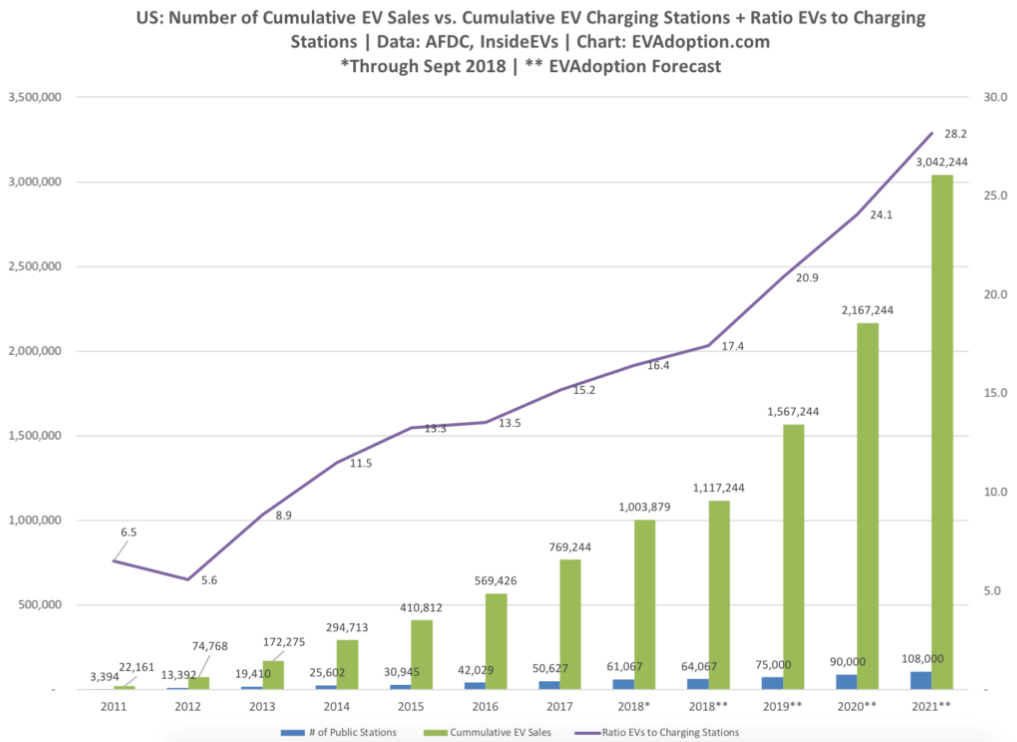This fall, an important milestone was reached when the 1 millionth electric vehicle (EV) hit U.S. roads. The all-electric future may still be years away, but EV momentum in the U.S. has rapidly accelerated since the first mass-market EVs were introduced in 2010. Thanks to the hard work and innovative planning from clean transportation advocates, public officials, utilities, and industry leaders, vehicles with little to no tailpipe emissions are entering the mainstream -- and bringing major benefits to our climate and wallets. Here are a few of the biggest factors driving the EV market:
The Federal Tax Credit and State Rebates
Consumers in many states enjoy rebates that shave thousands of dollars from the upfront costs of buying or leasing EVs, and buyers can get a federal tax credit of up to $7,500. Research shows this is hugely beneficial to the EV market -- nearly 30% of consumers who bought or leased EVs early on cited the EV credit as a factor in their decision. Almost half of Nissan Leaf buyers and 40% of Chevrolet Volt drivers said that they wouldn’t have purchased their cars without the credit incentive. Recent reports are concerning regarding the Trump administration and other conservative lawmakers and groups indicating an interest in repealing these credits.
Rapid Increase in Public Charging Stations
The availability of public charging stations is a leading factor in EV adoption, and the growing EV market has corresponded with major growth in EV charging. Today, there are more than 20,000 public charging station sites across the U.S. EVgo, one of the largest public network of fast-charging stations in the U.S., charged 40 million miles of electric driving in 2017 -- a number that’s already been broken by mid-August of this year.

Major Increase in EV Models
Automakers now have more all-electric and plug-in hybrid models available than ever before, which is a critical factor for market growth. Today, U.S. consumers can choose from almost 50 different models -- a long way since late 2010, when just three were available. More models are coming, including a plug-in hybrid Subaru, and an all-electric pickup truck that debuted at the Los Angeles Auto Show last month.
Public Outreach and EV Events
In the end, rapid spread of EVs comes down to public awareness. When consumers know more about EVs and are given a chance to test drive one, they frequently make the switch from gas to electric. That’s the power of experiencing instant torque, talking to EV experts, and realizing the major financial and climate benefits. National Drive Electric Week (NDEW) is the largest celebration and public education event for EVs and, over the past eight years, has seen rapid growth in number of events, attendance, test drives, participation of public officials, and media coverage. Just in 2018, there were upwards of 180,000 people attending 320+ events in all 50 states, with 9,000+ test drives and hundreds of media hits reaching millions. The rising popularity of NDEW has coincided with increase EV sales, particularly in the months afterward.
Our climate and the U.S. auto market have come a long way since 2010 when the first mass-market EVs were introduced. Improvements in battery technology, longer ranges, lower costs, and increasing interest of the public has and will continue to encourage a significant increase in EV adoption in the U.S. In the second part of this two-part blog series, we will look at which factors will likely drive the future of EV adoption in 2019 and beyond.